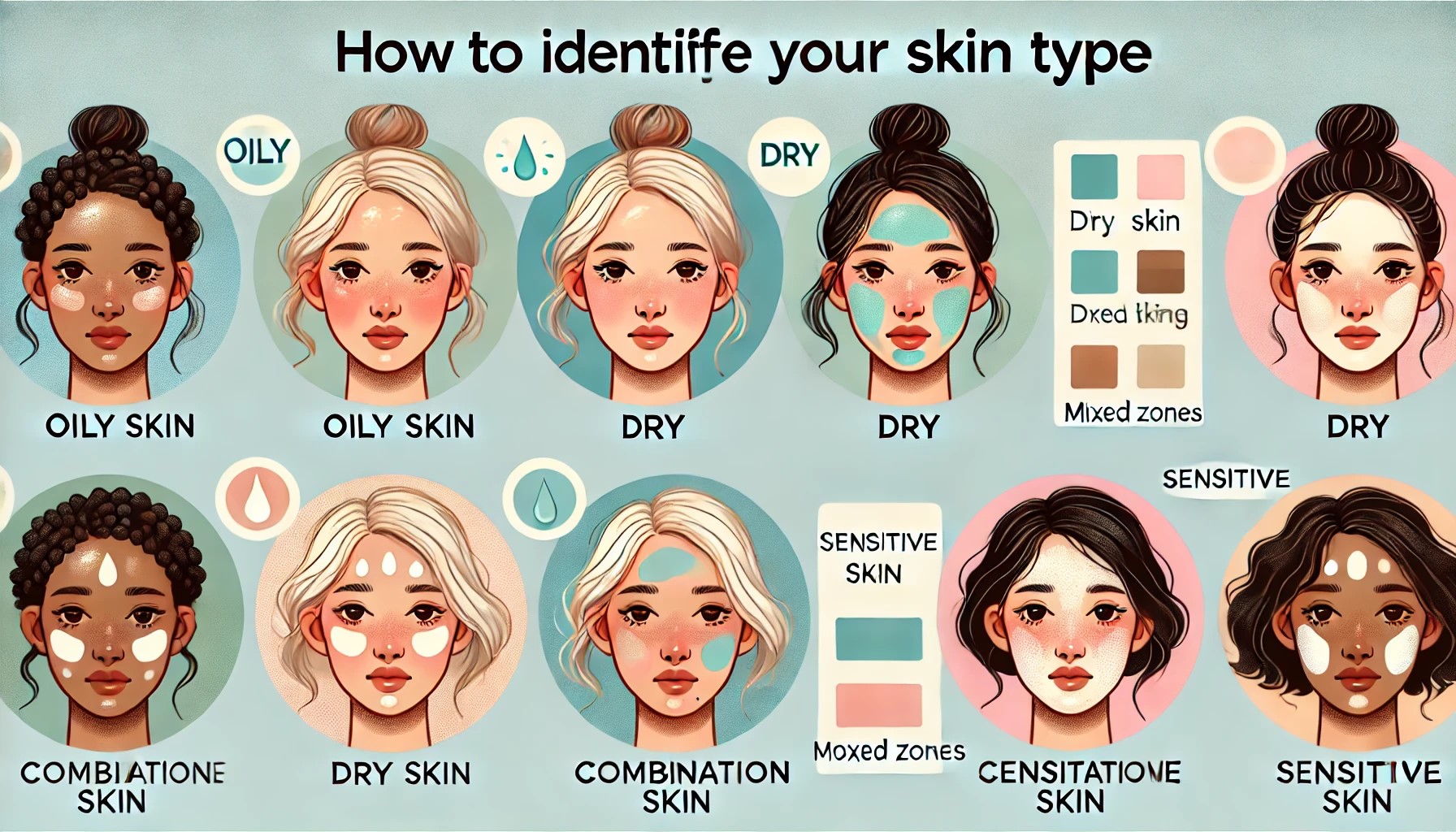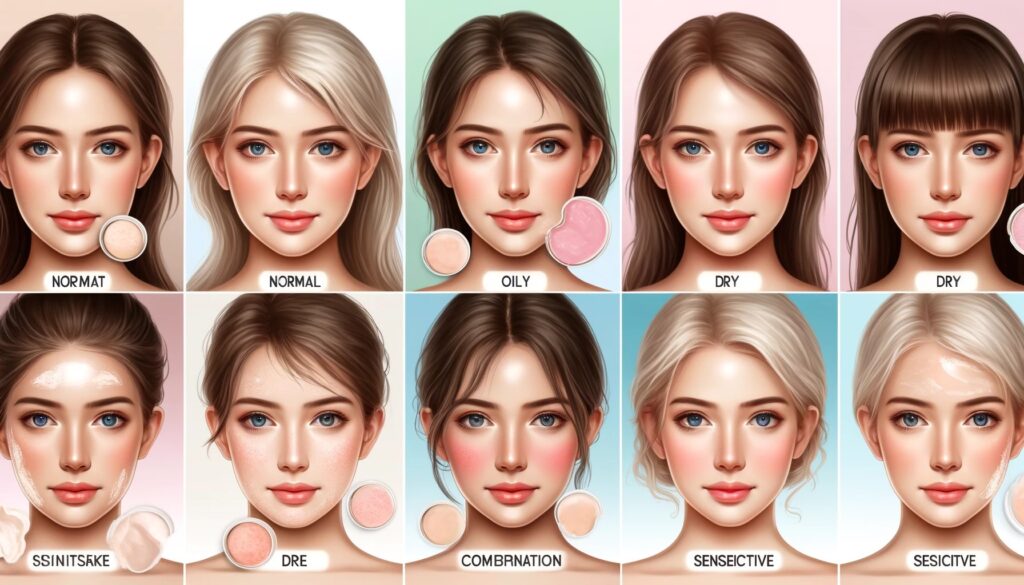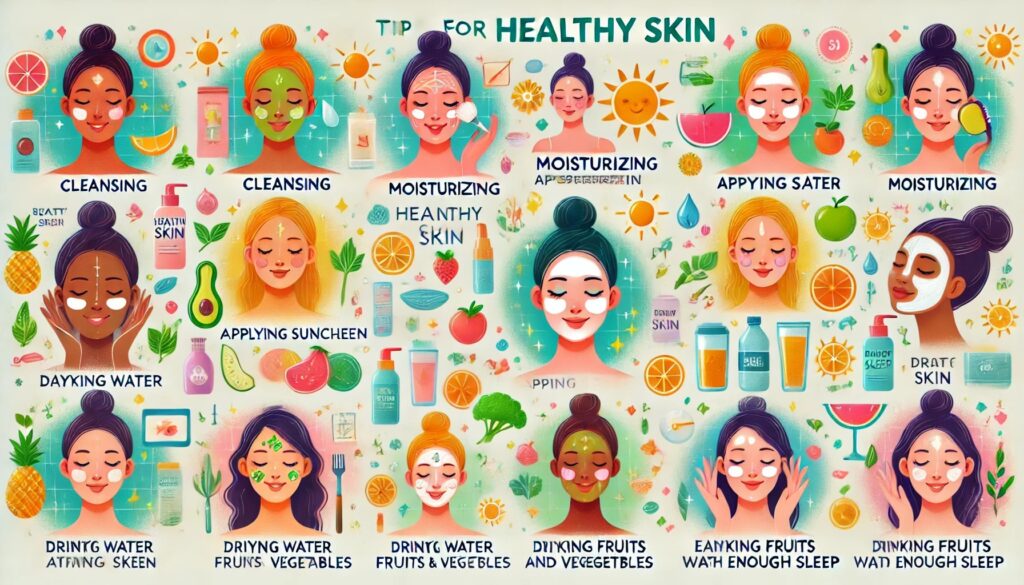Your skin is as individual as possible, and knowing your skin type is a basic step towards a skincare regimen. Regardless of whether you have greasy skin that gleams, parched skin that feels stretched, the combination skin that is difficult to anticipate, or sensitive skin that is so delicate, understanding your skin type puts you in control of purchasing decisions for both skin care products and practices. Every skin type is different and requires certain products, applying wrong products usually does more damage than help. It will help to understand whether the skin is oily, dry, combined or sensitive and it will properly care for the skin and preserve its natural barrier to become beautiful and healthy. Here in this article, we will guide you on how you can easily determine your skin type And start a proper skincare routine easily.
What Are the Common Skin Types?
First of all, to identify your skin type you have to familiarize with the features of each type. Dermatologists typically identify four main skin types: There are four: oily skin, dry skin, combination skin and sensitive skin. Both types have their characteristics and distinctive features, which determine your skin care regimen.
Oily Skin: The skin type which is characterised by formation of sebum on the skin thus resulting to a shiny skin and easily get break outs. Skin on the face can be thick and/oily, with large visible pores.
Dry Skin: The skin that does not produce enough sebum, feels dry, rough, or scaly, and may sometimes peel. Tiny lines could also be seen more easily.
Combination Skin: Usually created by having oily skin on the forehead, nose and chin, which is combined with dry skin on the cheeks.
Sensitive Skin: Sensitive skin which is easily affected by product or environemtal irritants and results in Redness. It may need special precautions, and only gentle products.
How to Identify Your Skin Type: Step-by-Step Guide?
It is easier than you may think to determine your skin type. Here’s a quick method to assess your skin’s unique characteristics:
Step 1: Cleanse Your Face
If you don’t have one, use a mild soap and clean your face gently then pat it with a dry towel. Do not use any form of creams or lotions after washing the face.
Step 2: Wait and Observe
Give your skin a break with no lotions or creams on for one to two hours. This will make you realize the typical form of this image without distortions.
Step 3: Check for Key Signs
Take a hand mirror and look closely at your skin without touching the mirror with your hands. Every part of your face may be oily, dry, flaky, red or shiny in comparison to the other part.
Step 4: The Blotting Paper Test should be accomplished.
In some sections of the sheet, lightly press it on some parts of your face. If it appears like this, then you might have oily and even combination skin if it takes on oil. If it stays clean, you most probably have dry or sensitive skin type.
Following those steps you will be able to assess your skin’s needs and what can be done to preserve it properly.
Despite skin type differences there are some general problems associated with each type.
As for every skin type there are certain problems accompanying it. These are some of them that you should be able to understand as you seek to deal with them adequately.
Oily Skin: Essentially, if your skin is oily, then it means that the glands are producing too much sebum, which can blunt the hair follicles and cause blackheads, whiteheads and acne. It can also be an on-going issue of shine control. Avoid products considered comedogenic or containing oil.
Dry Skin: People with this skin type commonly experience skin dryness, itching, and sensitivity to either cold or dry climate. Some examples of things that can help include products that are water soluble and contain humectant such as; hyaluronic acid.
Combination Skin: Selecting products that will meet the needs of ensuring that oil production is controlled in the T-zone without overdoing it and leaving the cheeks to dry can be somewhat a difficult undertaking. There is always good when using products that can be used for more than one task.
Sensitive Skin: This type of skin easily develops redness, irritation, rashes or any other allergic level. Choose products that do not contain scents as well as those, which will not cause allergic reactions.
Best Products for Your Skin Type
| Skin Type | Recommended Ingredients | Product Recommendations |
|---|---|---|
| Oily Skin | Salicylic acid, Niacinamide, Clay | Foaming cleansers, lightweight gels, mattifying moisturizers |
| Dry Skin | Hyaluronic acid, Ceramides, Glycerin | Cream cleansers, nourishing serums, rich moisturizers |
| Combination Skin | Balancing agents, Lactic acid | Hydrating toners, oil-free moisturizers |
| Sensitive Skin | Aloe vera, Chamomile, Colloidal oatmeal | Gentle cleansers, soothing creams |
Tips and Techniques for Healthy Skin
This means that skin health does not differ with skin type, but rather, care is needed all the time. Here are some universal tips:
1. Stay Hydrated: It also benefits the skin, having well hydrated skin makes it more elastic and hence, the skin will be glowing.
2. Protect with Sunscreen: Make sure you protect your skin every day from UV radiation using broad-spectrum SPF.
3. Avoid Harsh Ingredients: Do not use chemicals such as alcohols and do avoid chemical peels especially if you skin is sensitive or dry.
Section 5 FAQ’s
Q1: How can one be sure they have sensitive skin?
A: Some of them are tearing of the eyes or mild inflammation or burning sensation especially when using some products. It can also be affected by environment or changes in temperature, humidity and light with people who have sensitive skin.
Q2: There are people with combination skin type and the question is if this skin type can change over time?
A: Of course, one’s age, weather conditions, and hormonal changes can affect the skin type.
Q3: Can I use creams for the face and body at the same time?
A: Absolutely! People with combination skin can find it very useful to apply different product on different zones of the face.


